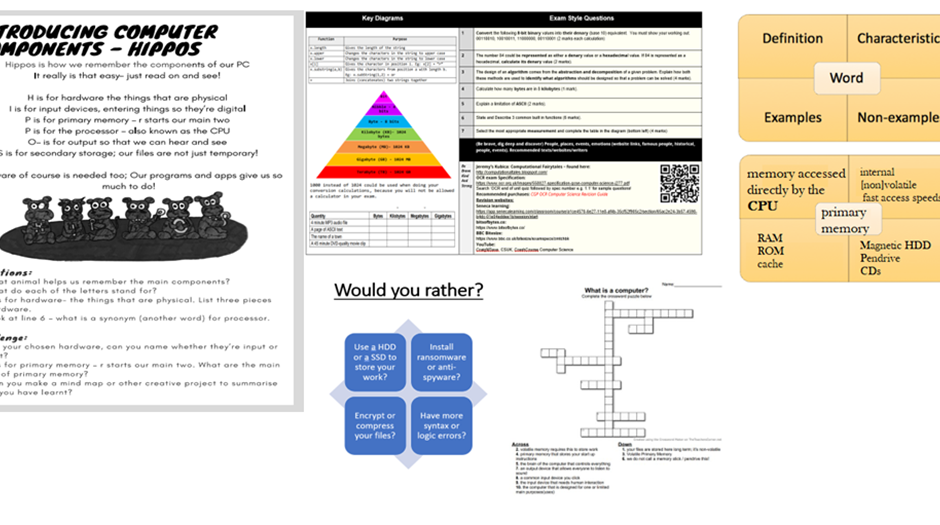15 December 2022
Embedding and developing literacy in the computing classroom

"Every teacher is a teacher of English because every teacher is a teacher in English”, George Sampson said and every school seems to push and promote this philosophy.
So how do you promote literacy in your subject? Are there whole school expectations or is it left to a teacher choice?
Here are some that I work or have had experience with:
The Frayer model:
https://www.theteachertoolkit.com/index.php/tool/frayer-model
There are different versions of this with some schools delving deeper into the history or etymology of the words, but the most successful in my opinion is this version.
Students could be introduced this in class, but they are also popular and useful homework tasks too.
This can help students make links across different topics in the curriculum and help identify any misconceptions.
Crosswords and word searches
This can be a good task as a starter or end task. However, to assess learning I’d avoid simply putting the words to find as this doesn’t really check understanding. Instead, having key definitions that they need to find the key term for works out better. Also avoid the assumption that students understand how a crossword works! This may need to be modelled first.
There are great free tools online to make these.
Would you rather….?
There are several creative ways to assess vocabulary – True or False tasks, word associations, correcting the wrong word etc. However, the task that several of my students tend to prefer is the would you rather tasks. These are a great plenary. Students should discuss there reasoning and it works best when some are an obvious choice whereas others can be open to interpretation!
Mnemonics and acronyms are also very useful for chunking information, although can sometimes lead to cognitive overload if not careful. Generally, though they can help trigger key information and lead to further definitions and connections between vocabulary. Who doesn’t love a catchy phrase?
And on a similar note, I use poetry and computing related jokes to make information stick. These are also great for times when tech become less reliable. For key stage four related poems, click here:
https://docs.google.com/presentation/d/1-5cdtkLDeyLL3C9bN0Vg5KI3gyhJ_xbo_8DWv_MiYkY/edit?usp=sharing
Knowledge organisers:
Last but not least we have knowledge organisers – typically made up of tier 2 and tier 3 vocabulary (tier three being subject specific and tier two more general/cross-curricular). Typically key words and there definitions are put together for a unit, which are provided to the students. Sometimes lessons or homework might be centred around these, or sometimes they are an additional supplement which can help increase accessibility to a lesson.
At the bottom of my knowledge organisers, there is also topic-related questions and a dig deeper section that reference further links and exploratory tasks for students to engage in. These can be great for cover work and challenge tasks too.
Regardless of personal opinion, often schools do insist on some strategy. If you have any particularly successful or not so successful tools, I’d love to hear them!


Discussion
Please login to post a comment